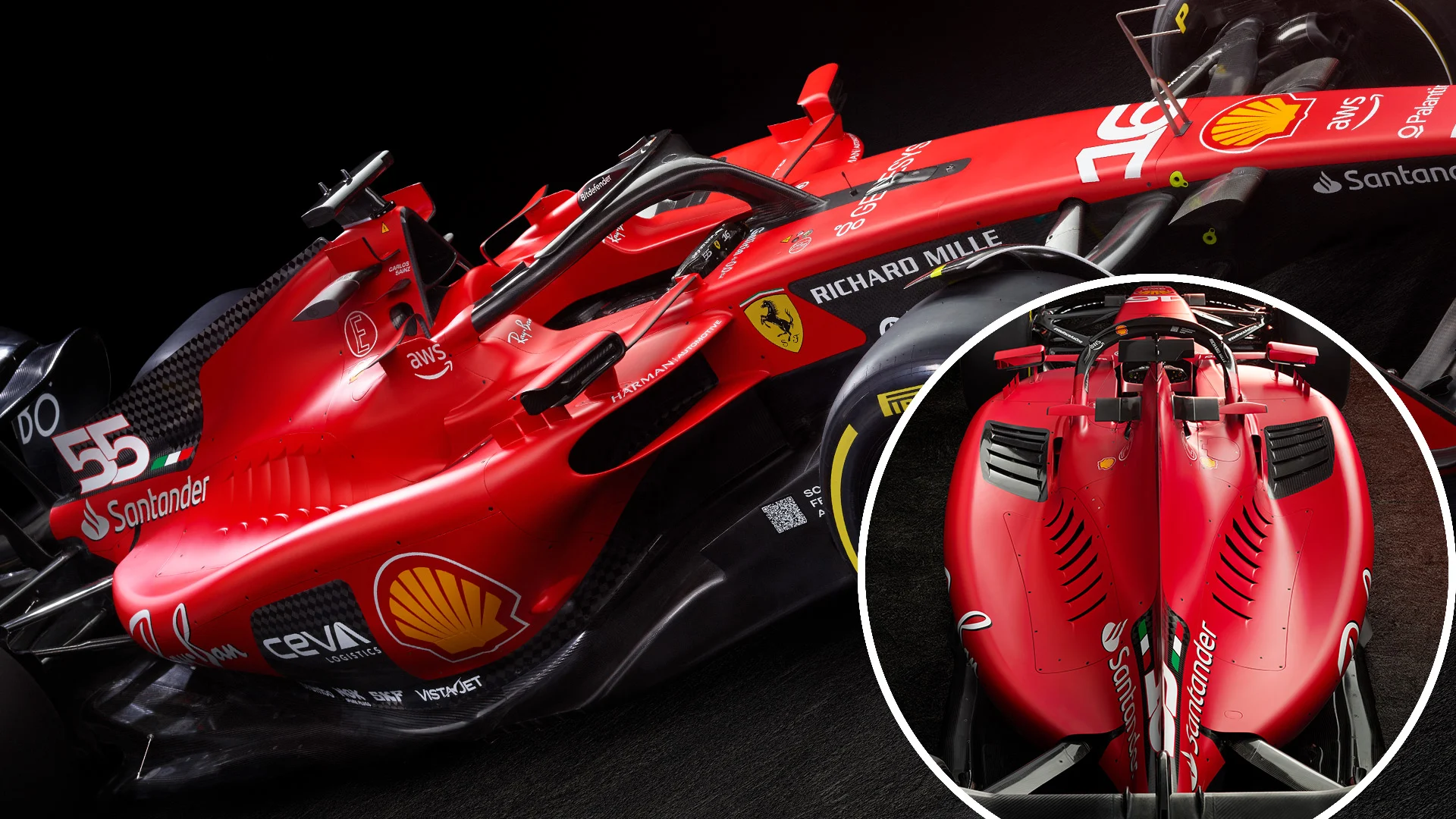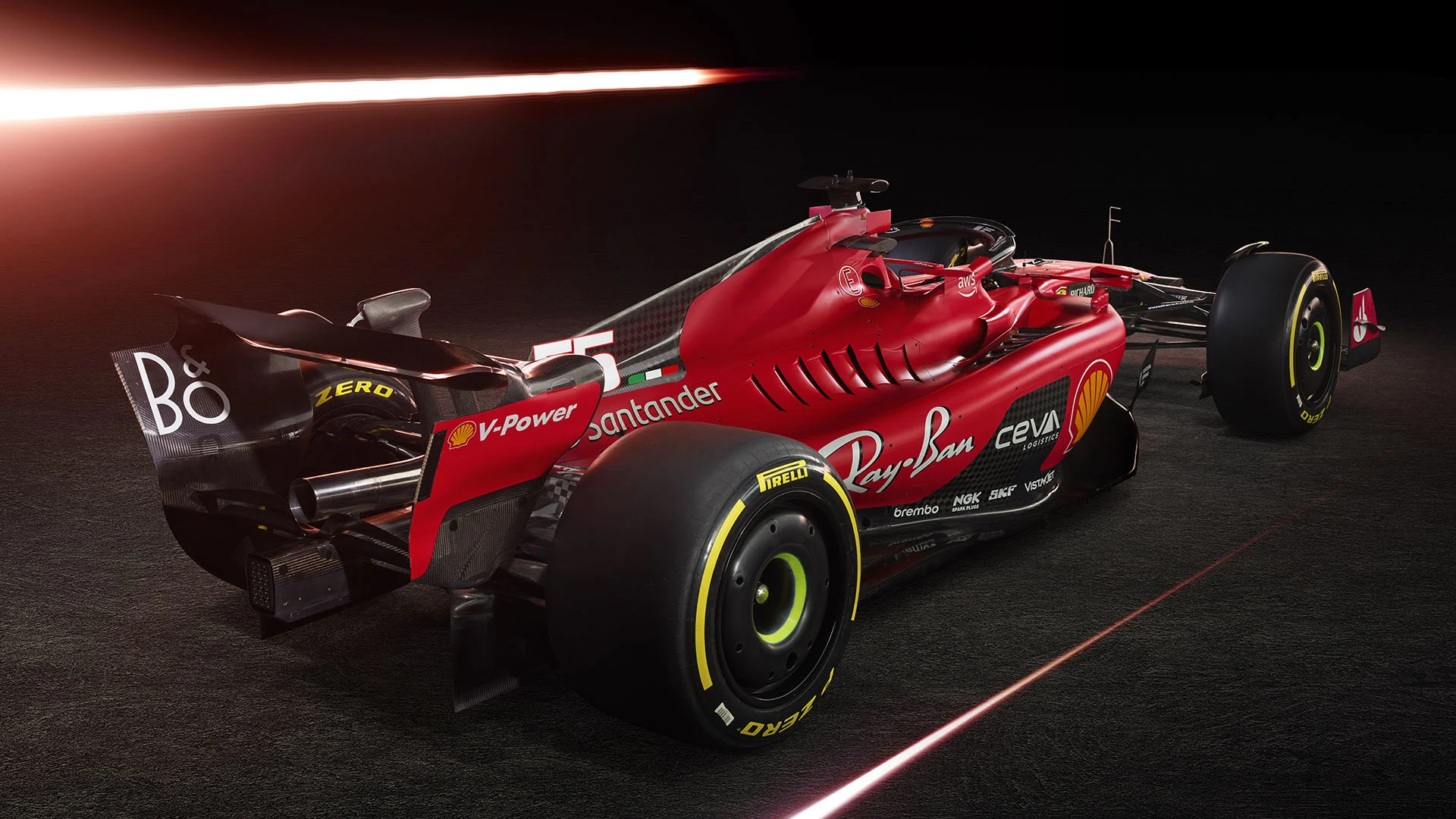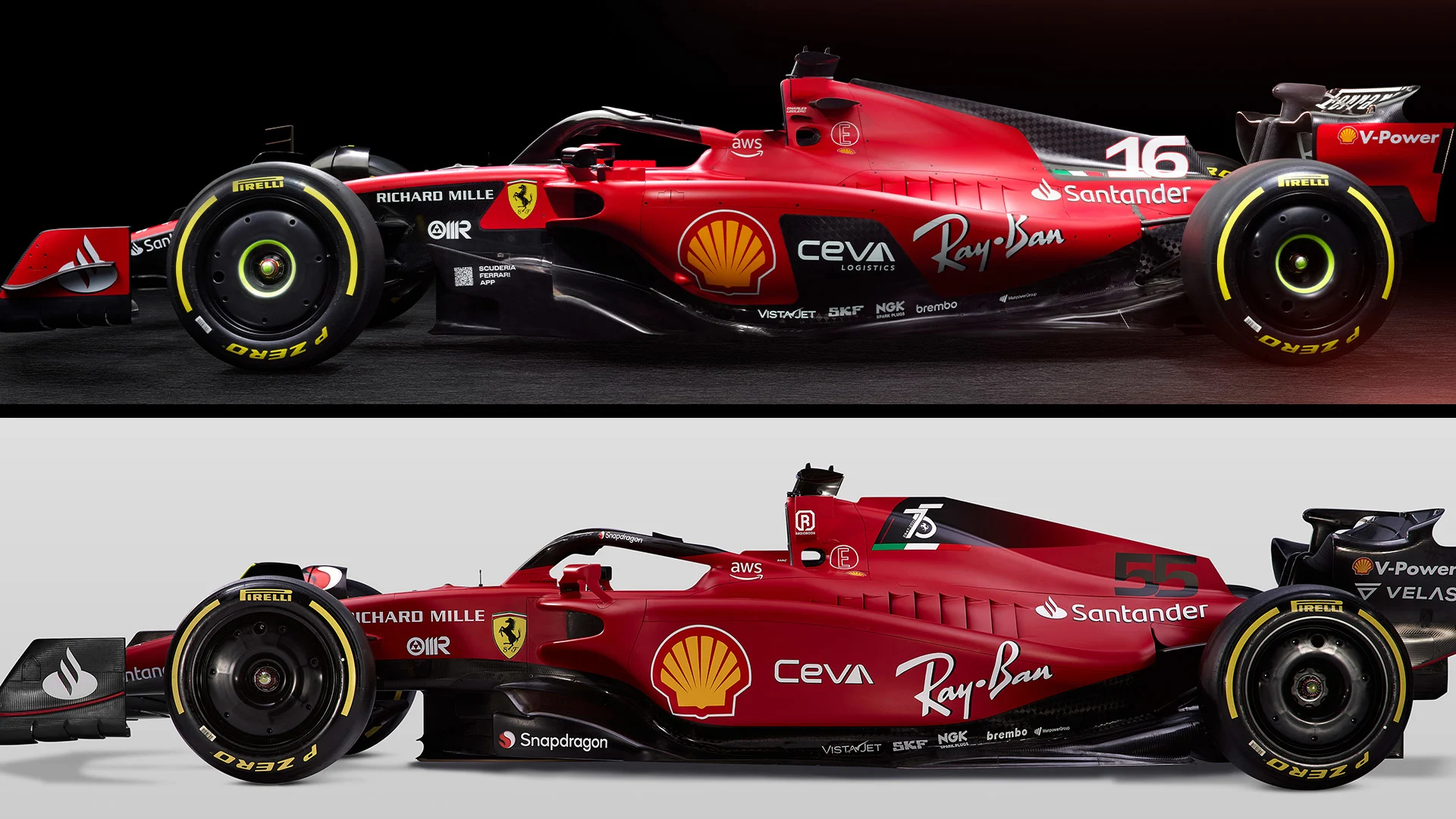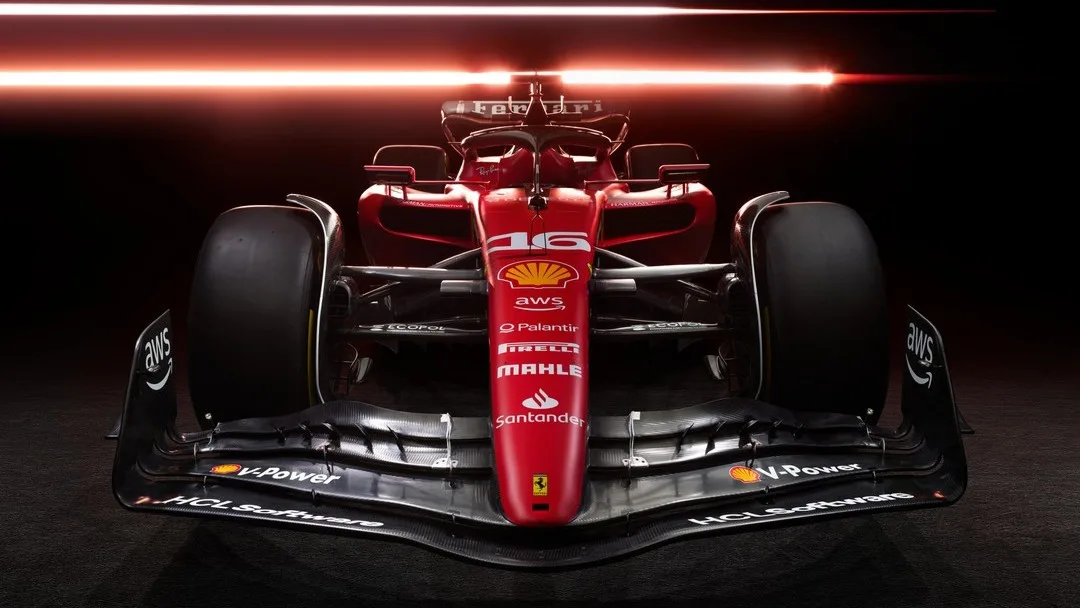TECH ANALYSIS: Ferrari's 2023 SF-23 – A complete redesign or subtle evolution?


Ferrari launched their brand-new SF-23 on Tuesday and it seems they've continued with last year's philosophy. Mark Hughes looks at why the Scuderia have focused on improving, rather than overhauling, their design.
Ferrari had a car fast enough last year to set 12 pole positions, four more even than the championship-winning Red Bull. So it’s perhaps not so surprising that the new SF-23 bears a very close resemblance to last year’s car.
The biggest factor blunting last year’s title challenge was the reliability of the power unit. After the double retirements in Baku, the PU ran in detuned form for the rest of the season as the team undertook the long project of making the ERS-H system more robust.
That work has been completed over the winter and the belief is that the power unit can now be safely run in the more aggressive way it was in the early part of last season, when it was the most potent unit on the grid.

Ferrari must hope that this, in combination with the tweaks they have made to the chassis, will be enough to fight with Red Bull for rather longer than was the case in 2022.
"Our 2023 car is an evolution of the one we raced last year, but in reality, it has been completely redesigned," said Head of Chassis Area Enrico Cardile as he outlined the changes. "On the aerodynamic side, we increased vertical downforce to adapt further to the new aero regulations and achieve the desired balance characteristics. The suspension has also been redesigned, to support aerodynamics and increase the range of adjustments that can be made to the car at the track.
GALLERY: Check out every angle of Ferrari's new 2023 F1 car and livery
"The most obvious changes are in the area of the front suspension where we have moved to a low track rod. The front wing is also different, as is the construction of the nose, while the bodywork is a more extreme version of what we saw last season."
It looks like a more svelte version of last year’s Ferrari, with the front lower corner of the sidepods scalloped away, suggesting that – like pretty much every other car so far launched – some radiator area has been moved out of there and higher up around the car’s shoulders.

It retains the ‘bathtub’ contours at the top of the sidepods, with a sunken depression aiding the air extraction and channelling it towards the rear beam wing.
The cooling rearrangement has not involved emulating the Red Bull bodywork ‘cannon’ towards a rear-extracted air exit. Instead, the bodywork where the engine cover and sidepod tops merge behind the cockpit remains extensively louvred.
The nose appears slightly flattened out and the front wing with which the car was launched featured slot gap separators which were angled in such a way as to create vortices, which will help accelerate the airflow towards the floor inlets at the bottom of the sidepods.
AS IT HAPPENED: Watch Ferrari unveil the SF-23 F1 car they hope will make them champions in 2023
Mercedes last year produced a wing similar in principle to this and presented it in Austin and Mexico, but the FIA declared it not in conformity with the regulations as it judged the primary function of the slot gap separators in this case was not structural but aerodynamic.
It remains to be seen if Ferrari’s more subtle interpretation of the same idea will be deemed acceptable.

More technical analysis of the 2023 F1 cars
Ferrari's 2023 SF-23 – A complete redesign or subtle evolution?
Mercedes stick to their guns on unique sidepod design with new W14
Is it a case of evolution or revolution for McLaren’s new MCL60?
What we learned from a first look at the brand-new Alfa Romeo C43
Unpacking the 'aggressive' new Aston Martin AMR23
The key design features revealed by Haas’s shakedown runs in the VF-23
Why AlphaTauri’s livery launch gave us some fascinating clues about the AT04
Williams continue Red Bull-like trend with FW45 design
Next Up
Related Articles
 Hadjar details what excites him most about racing for Red Bull
Hadjar details what excites him most about racing for Red Bull.webp) Where are all of Red Bull’s F1 graduates now?
Where are all of Red Bull’s F1 graduates now?.webp) How F1 drivers recharge during the winter break
How F1 drivers recharge during the winter break.webp) Quiz10 questions on McLaren World Champions
Quiz10 questions on McLaren World Champions.webp) Zhou Guanyu joins Cadillac as reserve driver for 2026
Zhou Guanyu joins Cadillac as reserve driver for 2026 F1 Arcade announces opening date for new Atlanta venue
F1 Arcade announces opening date for new Atlanta venue